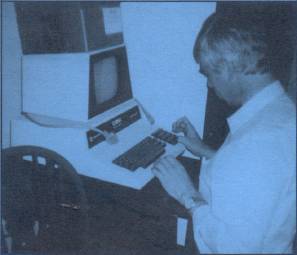|
(This article was first published in the ICPUG
Journal MARCH/APRIL 1989 issue.
Permission from Joe Griffin to republish on the Internet has been
received.)

Headering disks in the 1571 drive
Most users will know that the 1571 is a double sided drive which can be
made to act as a single sided (1541 type) drive. Fewer may realise that it
can actually use both sides of the disk as quite distinct 1541 disks.
A brand new disk can be headered in one of three ways:
1 As a standard double sided disk (1571 format)
2 As a standard single sided disk (1541 format)
3 As twin single sided disks (1541 format)
It has been said that once a disk has been headered as either double or
twin sided, it cannot be converted into the other. After some
experimentation, I found that it could be done fairly easily, with full
success.
If a twin-sided disk is to be converted into a double
sided, all that is required is that the ID code for the double sided disk
is the same as that used on the second side (described in the manual as
side one) of the twin-sided disk. This can be determined by setting the
drive into 1541 mode (UO>MO), selecting side one (U0>H1) and reading the
directory. Alternatively you can first header side one of the disk using
the required ID, then header the disk as double sided.
To convert a double sided disk into a twin sided, requires
a trick. When the drive tries to access the second side of the disk, the
head begins to hunt, as the information it is reading is not for a twin
sided disk. At this point the drive door should be opened. This causes the
head to bump, and the drive now knows where it is. As soon as the head is
heard to start moving, the door should be closed. Formatting will then
proceed as normal.
I have written a short program to header a disk in any
drive. If a 1571 is being used, the three formatting options are given.
|

